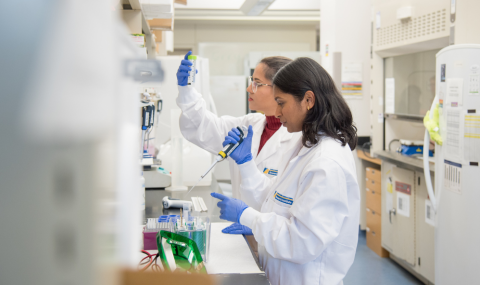
The Transplant Journey
Each year, more and more Canadians are waiting for an organ or tissue transplant to save or improve their lives. Unfortunately, some patients die while waiting for a transplant because there are not enough organs donated. To find out more about a transplant patient's journey, browse through these topics:
Getting on the transplant list
People need an organ or tissue transplant when drugs or surgery cannot help them any more. Before their names are added to the transplant waiting list, patients have medical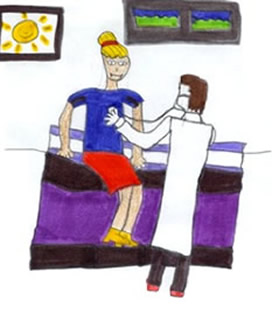 tests done at the transplant hospital to make sure they are suitable for a transplant.
tests done at the transplant hospital to make sure they are suitable for a transplant.
Sometimes, people are born with their disease. Other times, they become sick and their illness becomes worse so they need a transplant. Depending on their disease, they may need a heart transplant, a liver transplant, or another type of transplant. Sometimes, a patient needs two or more organs, such as a pancreas and kidney transplant.
Transplant patients range in age from babies to grandparents. For example, the youngest transplant patient in the world was only one hour old when she had a heart transplant at Jackson Children's Hospital in Miami, Florida, USA.
Waiting for the transplant
Once it's decided that a person can benefit from a transplant, his or her name is added to the transplant waiting list. Depending on the type of organ needed, people may wait a couple of years before a suitable organ becomes available.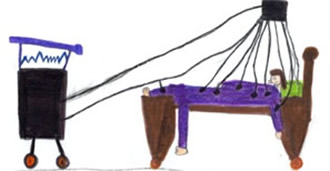
While waiting, their health may become worse. Adults may not be able to work. Children may no longer be able to go to school or play sports with their friends. A lot of patients wonder if the organ will be donated in time to save their life.
As patients move towards the top of the waiting list, they carry a pager so they can be reached at any time if an organ becomes available for them. Sometimes, they become so ill before their transplant that they need to go into a hospital for medical care.
The donor donates
Most organs and tissues come from deceased donors – these are people who have become severely sick or injured, and died in a hospital. Most people who donate organs must be "brain dead." This means that the brain swells, cutting off its own blood supply. Doctors do all they can to reduce the swelling, but sometimes nothing helps. Using several medical tests, they know there is no blood getting to the brain. This means that the person is dead, and they cannot feel pain or move. They cannot breathe so a ventilator keeps oxygen going through the body so the organs can be used for transplant.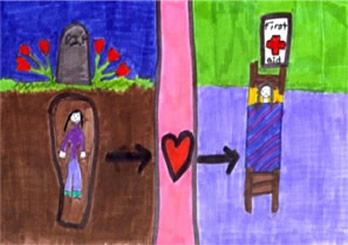
After consent is given by the person's family, the organs and tissues can be removed for transplant. In an operating room, surgeons remove the donated organs and tissues, which are packed carefully for the trip to the waiting patient. The incisions are then closed, as in any other surgery. For the funeral, an open casket is possible, if this is what the family chooses.
Traveling by airplane or ambulance, the transplant teams make sure the donated organs are transplanted into the selected recipients within hours.
Many different organs and tissues can be donated – the heart, two lungs, two kidneys, liver, small bowel, pancreas, two corneas from eyes, skin, bone, heart valves, and islet cells from the pancreas.
Sometimes, living donors are used. For example, people have two kidneys so they may be able to donate one of their kidneys to someone else in their family.
The transplant surgery
After a person dies in hospital, the donated organs are removed by surgeons in an operating room. The organs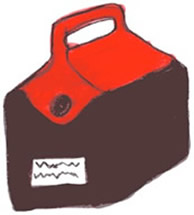 are handled very carefully so they will not be damaged in any way. Each organ is stored in its own container with ice and a special solution that keeps the organ as healthy as possible. Once stored, the organ is transported anywhere in Canada so the sickest patient is transplanted first.
are handled very carefully so they will not be damaged in any way. Each organ is stored in its own container with ice and a special solution that keeps the organ as healthy as possible. Once stored, the organ is transported anywhere in Canada so the sickest patient is transplanted first.
Once the organ arrives at the transplant centre, a different surgeon transplants the organ into the recipient. Using tiny sutures (a thin special thread) or staples, the doctor sews the new organ into place being very careful to connect all the blood vessels so they do not leak. The transplant surgery usually takes between four to eight hours, depending on the organ being transplanted.
Recovery after the surgery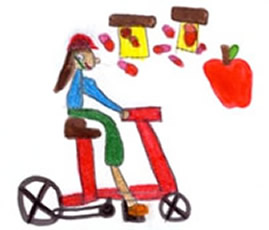
After the transplant, patients usually stay in hospital for one to four weeks. After leaving the hospital, our transplant patients stay in London for a few weeks so they can have regular checkups. During their inpatient and outpatient stays, patients learn about new drugs that they need to take.
Anti-rejection drugs ("immunosuppression") are started when the person has the transplant. These drugs help the body so it is less likely to reject the new organ. They also take part in an exercise program to help build their strength. Once they go home, their family doctor keeps track of their health.
Life after transplant
Generally, transplant success rates are excellent – between 80-95 percent of patients enjoy active, healthy lives after transplant. They're encouraged to participate in normal, day-to-day activities. Overall, transplant recipients enjoy an excellent quality of life and are able to work, attend school, travel, and play sports.
patients enjoy active, healthy lives after transplant. They're encouraged to participate in normal, day-to-day activities. Overall, transplant recipients enjoy an excellent quality of life and are able to work, attend school, travel, and play sports.
"Camping is the best!", drawn by one of our young heart transplant recipients. "I love camping with my family, along with swimming and doing arts and crafts. When I grow up, I'm going to be a doctor, an artist, or a hair dresser... anything I want to be!"

